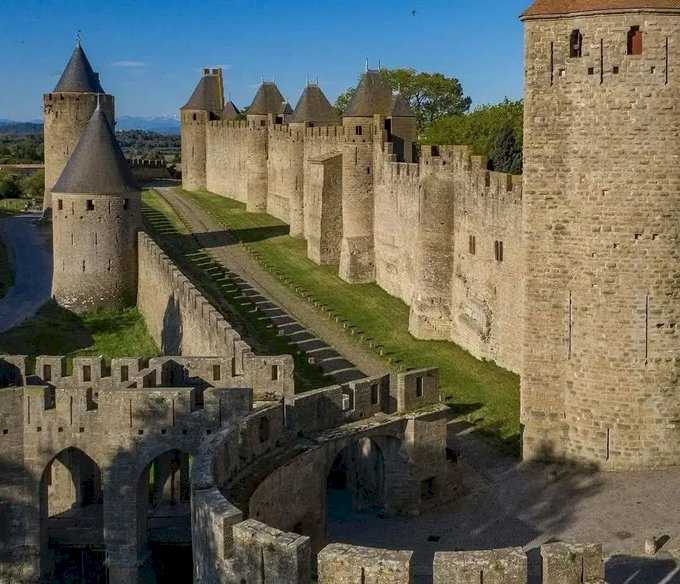

View 289 times
Railway 'HOT BOX' Inspector.......
New York City 🇺🇸, 1935.
Passenger trains, as well as freight trains entering the station complex, had to slow down enough to be able to change direction. They had been operating at a much higher speed before reaching the place shown in the picture, meaning that the wheel bearings had been operating at higher speeds, creating more friction.
A bearing without enough lubrication would be smoky if it didn’t catch fire, and it was the inspector’s job to detect the smoke/fire from a “hot box” and report it so the train could stop and fix the problem.

View 287 times
Caerlaverock Castle, located near Dumfries in Scotland 🏴, a striking triangular fortress dating back to 13th Century AD. Its unique shape and impressive moat make it a distinctive landmark, surrounded by beautiful countryside.
The castle has a rich history, playing a key role in various conflicts, including the Wars of Scottish Independence. Visitors can explore the well-preserved ruins, which include a drawbridge and an impressive gatehouse, while enjoying scenic views of the surrounding landscape.
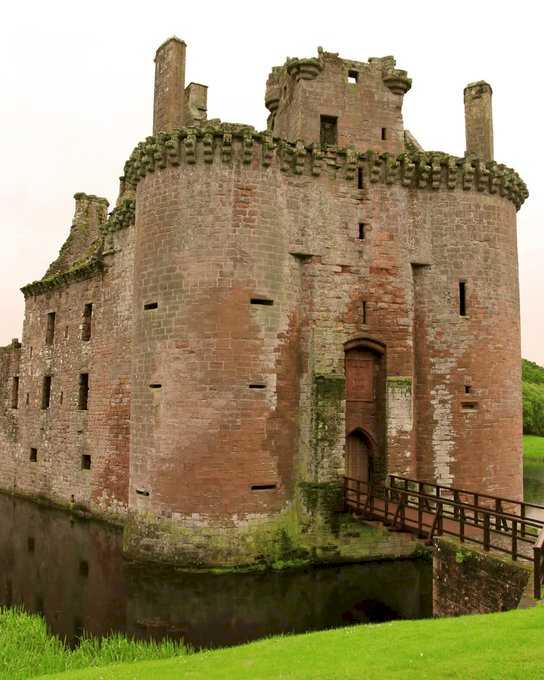
View 284 times
A newly deciphered manuscript dating back 1600 years has been determined to be the oldest record of Jesus Christ's childhood, experts said in a news release. (13, June, 2024)
The piece of papyrus has been stored in a university library in Hamburg, Germany, for decades, historians at Humboldt University announced. The document "remained unnoticed" until Dr. Lajos Berkes, from Germany's Institute for Christianity and Antiquity at Humboldt University in Berlin, and professor Gabriel Nocchi Macedo, from Belgium's University of Liège, studied it and identified it as the earliest surviving copy of the "Infancy Gospel of Thomas," a document detailing Jesus Christ's childhood.
The translation marks a "significant discovery for the research field," Humboldt University said. Until now, it was believed that the earliest version of this gospel was a codex from the 11th Century AD. The document translated by Berkes and Macedo was dated between 4th-5th Century. The stories in the document are not in the Bible, the news release said, but the papyrus contains anecdotes that would have been widely shared in the Antiquity and the Middle Ages. The few words on the fragment describe a "miracle" that Jesus performed as a child, according to the Gospel of Thomas, which says he brought clay figures of birds to life.
The document was written in Greek, Macedo said, confirming for researchers that the gospel was originally written in that language. The fragment contains 13 lines in Greek letters and originates from late antique Egypt, according to the news release.
The papyrus went ignored for so long because past researchers considered it "insignificant," the news release said. New technology helped Berkes and Macedo decipher the language on the fragment and compare it to other early Christian texts. "It was thought to be part of an everyday document, such as a private letter or a shopping list, because the handwriting seems so clumsy," Berkes said in the news release. "We first noticed the word Jesus in the text. Then, by comparing it with numerous other digitised papyri, we deciphered it letter by letter and quickly realised that it could not be an everyday document."
Macedo and Berkes said in the news release that they believe the gospel was created as a writing exercise in a school or monastery. That would explain the clumsy handwriting and irregular lines, they said.
#archaeohistories

View 281 times
The Hussite Wars introduced a concept that remains impactful to this day: wagon forts.
Amidst the tumult of medieval warfare, the Hussites had an ingenious adaptation of conventional resources for strategic gain. These humble wagons were transformed into agile strongholds, revealing a level of tactical thinking that caught their adversaries off guard.
Wagon forts embodied the fusion of mobility and defense. Typically arranged in circular or semi-circular formations, these fortified enclosures allowed the Hussites to establish defensive positions. The wagons were placed strategically, forming a barrier that shielded the troops within. This mobile shield-wall could be repositioned to adapt to changing battlefield dynamics, offering both protection and tactical flexibility. These mobile strongholds effectively disrupted the conventional strategies of their opponents, creating confusion and hesitation.
Wagon forts were constructed using a variety of wagons, ranging from transport to supply carriages. They were typically linked together with chains, interlocking wheels, or other connectors, creating a cohesive defensive structure. The wagons themselves were positioned side by side, forming a continuous barrier. While historical records vary, estimates suggest that each wagon fort could consist of anywhere from a dozen to over a hundred wagons, depending on the scale of the battle and available resources.
The fusion of mobility and defense, coupled with adaptability, remains a cornerstone of effective warfare. These insights continue to inspire modern military thinkers, highlighting the potency of unorthodox tactics.
© My Lineage

View 281 times
ROMA E L'EBRAISMO IN ETA' IMPERIALE
"These rites," writes Tacitus, "no matter how they were introduced, find justification in their antiquity. The other practices are perverse and infamous and were imposed due to their depravity. In fact, the worst scum of this world, after having renounced their native religions , brought tribute and money there: in this way the power of the Jews grew, also because among themselves they are always very loyal and very available for mutual aid, while they reserve their harshest hatred for everyone else."
Tacitus's very harsh words towards the Jews (book V of the Books) cannot be understood without contextualising the Roman-Jewish relations of the period. Tacitus writes at the beginning of Trajan's reign, about thirty years after the great Jewish revolt tamed by Titus and the destruction of the Temple. Before that date, relations between Rome and the Jews were essentially correct and peaceful, with the exception of a few episodes.
Rome in fact recognized large autonomy to the Jews: the peculiarities and oddities of Jewish monotheism were accepted because, as Tacitus writes, "antiquitate defenduntur", "they were defended by their antiquity" (a factor that Christians, however, would not be able to invoke in that period).
Jews were, for example, exempt from military service and from sacrifice to pagan gods. Above all, Rome allowed the Jews to fully carry out their religious holidays, which had their epicenter in the Temple of Jerusalem, to which Jews from every part of the empire sent an annual donation.
These were no small concessions because (contrary to what we often read) Judea was not a poor, desolate and forgotten province but, although it pales in comparison to neighboring Syria and Egypt, it was a fertile land, densely populated (given the divine commandment of "multiply" and the prohibition of abortion), enriched by the cultivation of balsam and made very rich thanks to aforementioned donations from the Jews to the Temple.
One of the few tangible signs of Rome's dominion was the inclusion of the emperor's name in the prayers addressed to God (it was precisely the interruption of this invocation that marked the beginning of the revolt in 66) during the daily sacrifices in the Temple.
All this ended with the revolt of 66-70 AD, whose genesis (also caused by the senseless rapacity of various Roman prosecutors) and whose development would take up many pages. At the end of one of the bloodiest wars of all times, however, the Temple was a pile of ruins, Jerusalem devastated and militarily occupied by a legion and Judea depopulated. What was exceptional, however, by Roman standards, was the failure to rebuild the Temple.
The Jews had a new status within the empire: subjects like the others, free to profess their own religion, but without what was its center and, above all, subject to a tax as famous as it was infamous: the fiscus iudaicus. The donations, once directed to the cult of the Temple, were now directed to the imperial treasury (some Egyptian papyri testify to the meticulousness with which the tax was collected).
The Jews rebelled twice more: in 115-117 AD, during Trajan's Parthian campaigns, and a few years later (132-135 AD) under Hadrian. The result of these further and ruinous wars was the total removal of the Jewish people from Jerusalem, which became a Roman military colony, first pagan and then Christian, with the name of Aelia Capitolina and would be known as such for many centuries. A temple to Capitoline Jupiter arose on the Temple Mount, adorned with some large statues of Hadrian.
These events were decisive not only for ancient history, but have had consequences on all subsequent eras, up to the present day.
#archaeohistories
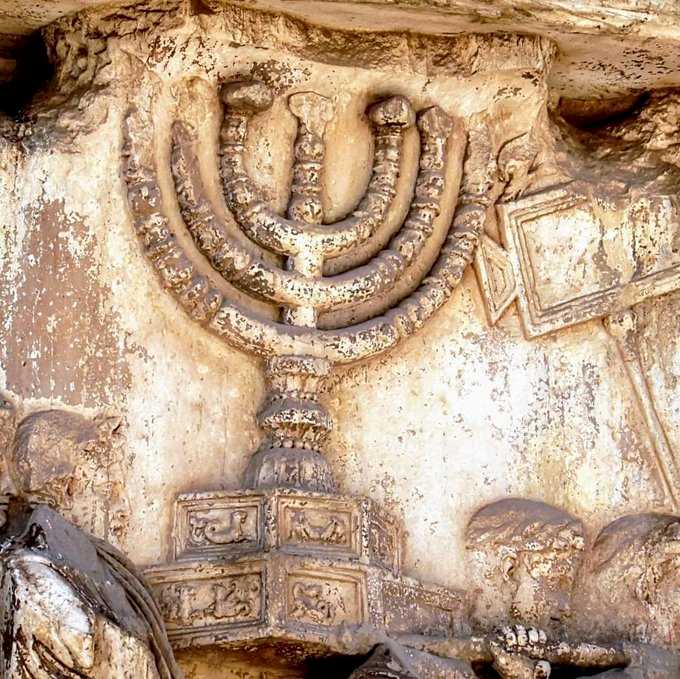
View 280 times
"Imperial Passport" (1240 CE) issued by the authority of Kublai Khan (1215-1294 CE) from Yuan Dynasty (1271-1368 CE); – One of the two known 'Kublai Khan Passport', inscribed in Phags-Pa script and it reads -
”I am the emissary of the Khan. If you defy me, You die”
Mongols invented the world’s first diplomatic passport known as “Paiza/Paizi” under Genghis Khan during the 12th-13th Century CE, which was carried by nobles and officials to demand goods and services from civilian populations.
The Paiza or Paizi were metal tablets inscribed in gold, silver, bronze with safe passage statement signify certain privileges to protect diplomats, merchants, messengers traveling in silk route. Paizi served as a sort of 13th Century CE, diplomatic passport to allow the holder free passage and access to supplies through the territory controlled by Mongols. These small metal plates issued by the Great Khans of the Mongol Empire and given to merchants, messengers, skilled artisans, officials, and important guests.
The famed Venetian traveler Marco Polo (1254-1324 CE) is said to have carried a foot long three inches wide gold paiza issued by Kublai Khan (grandson of Genghis Khan) himself on his extensive travels across Eurasia. The paiza pretty much works like diplomatic passport, giving wide ranging rights to receive lodging, provisions, horses, and guides throughout the lands controlled by the Khan.
Some paizi were carried by government officials as proof of their position and title, while others were given to people coming and going through the empire. They were usually reserved for people who traveled on state business and foreigners who were in Mongol territory under the protection of the Khan. A letter sent by the emperor in Beijing carried by an envoy wearing his paiza, or passport, could reach the Ilkhanid capital Tabriz, some 5,000 miles away, in about a month.
The Mongols created the largest contiguous land empire in history, which stretched far across Eurasia at its greatest extent in 1279 CE. Mongol empire existed during the 13th-14th Centuries CE, and was the largest land empire in history from the east to west, with mongols came invaded as far as Poland and Hungary into Europe. Before they could invade Vienna, the King Ögedei’s death brought halt to the invasion.
The Mongol Empire emerged from the unification of several nomadic tribes in the Mongol homeland under the leadership of Genghis Khan, whom a council proclaimed ruler of all the Mongols in 1206 CE.
The Hermitage - St. #Petersburg
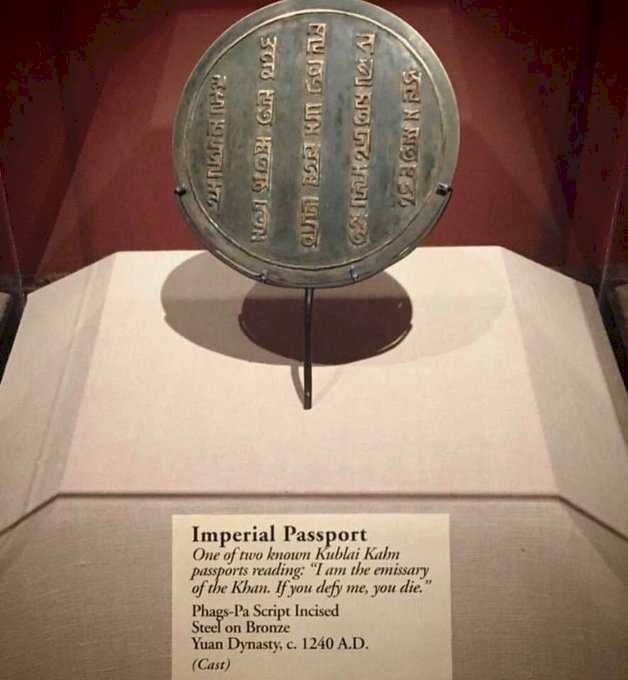
View 284 times
A true icons of Italy that is as admired as much now as it was back in 1957... The Fiat 500 Was the First True City Car -
There’s no Italian car more iconic than the Fiat 500. True, it may not have the horsepower of a Ferrari or be a headturner like a Lamborghini, but there’s a certain level of affection that comes from seeing it bumble and bounce through the cobblestoned streets of Rome or wind like a toy car down the curving roads of the Positano coastline.
The car, more than any other, has become a historic symbol of Italian culture and style, and it has the cultural credentials to prove it. The Fiat 500 drives Audrey Hepburn and Gregory Peck around in Roman Holiday (1953), and races against Mini Coopers through the streets of Turin in The Italian Job (1969). Madonna dances in a club with the car in the music video for “Hung Up”, and Katy Perry with it in “Last Friday Night”. A photograph of Peter Sellers, hanging out of the sunroof trying to capture his wife Britt Eckland on her Vespa cruising in front of the Colosseo, is world famous. The Cinquecento was even a cover girl, in a 1987 edition of Elle Magazine.
Born in July of 1957, this tiny rear-engine car, designed by Dante Giacosa, came from the need for affordable, practical, and economical transportation in post-war Italy; a need the Fiat 500, also marketed as the “nuova”, quickly satisfied, becoming known as the “people’s car” for its efficiency and size.
Just a little over 2.5 meters long, the two-door, semi-convertible Cinquecento was touted as the first true city car, and anyone who’s attempted to maneuver through the little streets of a Piemontese mountain town or the narrow, “one-way” alleys of Naples with any other automobile will understand why. Originally driven by a 479 cc two cylinder engine that topped out at 85 km/h (53 mph), the car was a bit… underpowered. But with later models, the engine increased in horsepower to satisfy those who wanted a bit more when shifting through the gears, and throughout the car’s first life, from 1957 to 1977, a whole host of models rolled off the production line at the famous Fiat Lingotto factory in Turin.
© Automobile Historia
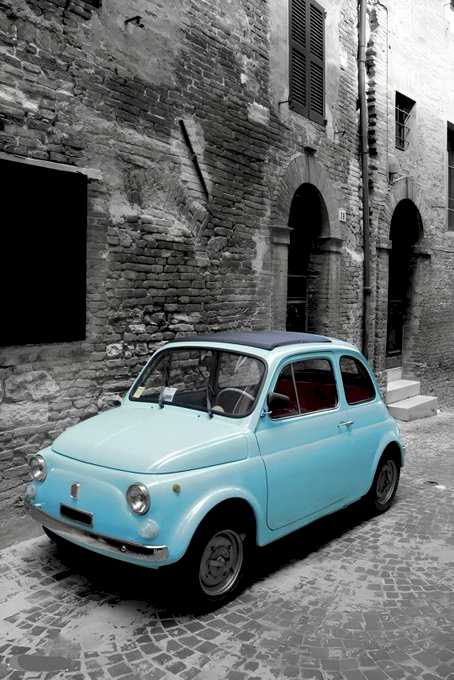
View 283 times
A bust dedicated to the Hellenic King, Alexander the Great. Located in the city he founded, Alexandria, Egypt 🇪🇬
The bust of Alexander the Great in Alexandria, Egypt, honors the legacy of one of history's most renowned conquerors, who founded the city in 331 BC. Alexandria quickly became a center of culture, learning, and commerce, and under Alexander’s vision, it flourished into a prominent Mediterranean metropolis.
The bust stands as a tribute to Alexander’s far-reaching impact, not just on Egypt, but on the world. His campaigns stretched across continents, spreading Greek culture and ideas from Greece to Egypt, Persia, and beyond. As the founder of Alexandria, he laid the foundations for what would become a vital intellectual hub, symbolized in this bust by his enduring influence on the ancient world.
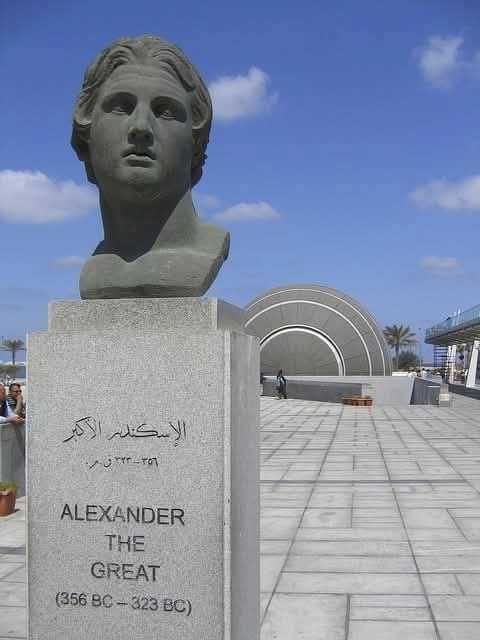
View 282 times







archaeology Histories News on Umojja.com